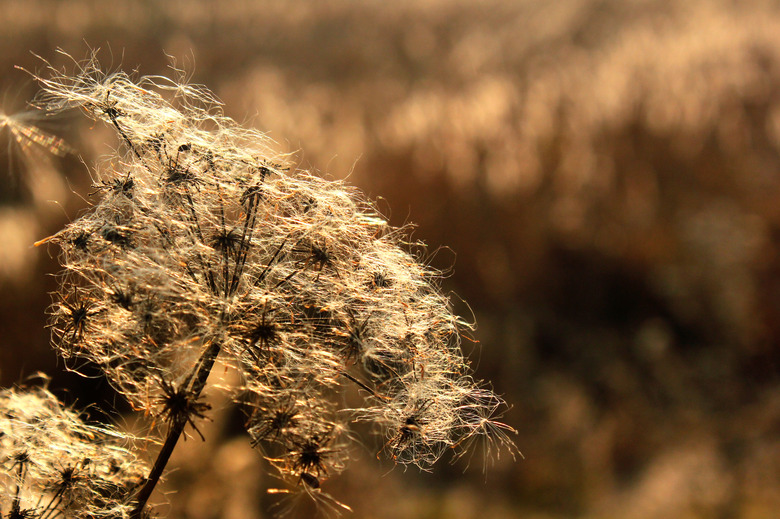Marsh Plants & Animals
Marshes are large expanses of wetlands dominated by grasses, small trees, shrubs and shallow water. They serve as ecosystems for plants and animals, as barriers to erosion and as filters between estuaries and oceans. While there are thousands of different marsh plants and animals, there are some that are easily recognizable because of their prominence along America's highways and popularity among florists, home gardeners and hunters.
Saltwater Marsh Plants
Saltwater marshes serve as barriers between inland waterways and an ocean. The coastline of South Carolina has more saltwater marshland than any other state on the Atlantic Coast, including wetland grasses. Smooth cordgrass, or Spartina alterniflora, is the dominant plant in South Carolina salt marshes. It grows in dense bunches and has tall, smooth yet rigid blades that secrete salt. During spring and summer, the cordgrass blades are green with a flowering stalk. During the fall and winter, the plants turn brown.
Freshwater Plants
Among the most recognizable wetland plants in freshwater marshes is the common cattail (Typha latifolia). The long green stalk of the cattail is topped by a brown hot-dog-shaped cylinder called a catkin. The stalk is surrounded by tall, spiky leaves. The plants can grow to be 10 feet tall. Another common plant is the water lily, a fragrant flowering plant of floating leaves. The white and yellow flowers contrast with the green circular leaves that surround the bulb. Beavers, muskrats, ducks and even deer eat the leaves, roots and seeds of water lilies.
Mammals
Otters, muskrats and minks are among some of the most common marsh animals. However, many animals suffer because of human development and pollution and are declining in population. Unlike the endangered minks, muskrats are thriving marsh animals. The semi-aquatic brownish rodent has webbed feet, a scaly tail, stiff short hairs and a white patch on its chin. Muskrats congregate around cattails and construct dome-shaped houses with marsh vegetation. While their main source of food is cattails, they also eat rush plants. They are an important part of the marsh food chain and serve as food for hawks, water snakes, owls and large turtles.
Birds
Red-winged blackbirds, rails and great blue herons live in marshes. The heron, a bird commonly associated with marshes, wades in the water and breeds above ground in trees close to wetlands. They are mostly gray-blue with a white head. The females lay pale blue eggs, and parents share in feeding the young via regurgitation. Herons eat crustaceans, fish, amphibians, insects and reptiles. Heron populations in some areas are threatened due to contamination of marshes from agricultural pesticides and industrial runoff.
Fish, Crustaceans and Amphibians
Types of bass, pike, walleye and sunfish are common marsh fish. In some areas of the country, marshes are popular fishing spots because of the abundance of bass and other edible fish. Water worms, crabs and shrimp are an important part of the marsh ecosystem because they eat decaying plants, bacteria and small insects.
Cite This Article
MLA
Miller, Lauren. "Marsh Plants & Animals" sciencing.com, https://www.sciencing.com/marsh-plants-animals-6462874/. 22 November 2019.
APA
Miller, Lauren. (2019, November 22). Marsh Plants & Animals. sciencing.com. Retrieved from https://www.sciencing.com/marsh-plants-animals-6462874/
Chicago
Miller, Lauren. Marsh Plants & Animals last modified March 24, 2022. https://www.sciencing.com/marsh-plants-animals-6462874/
